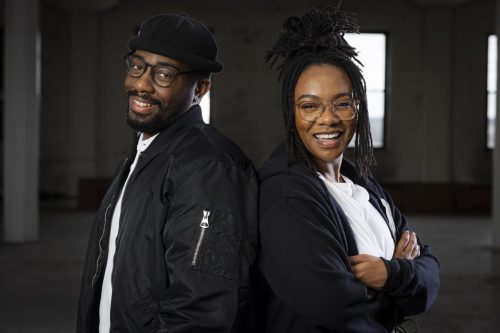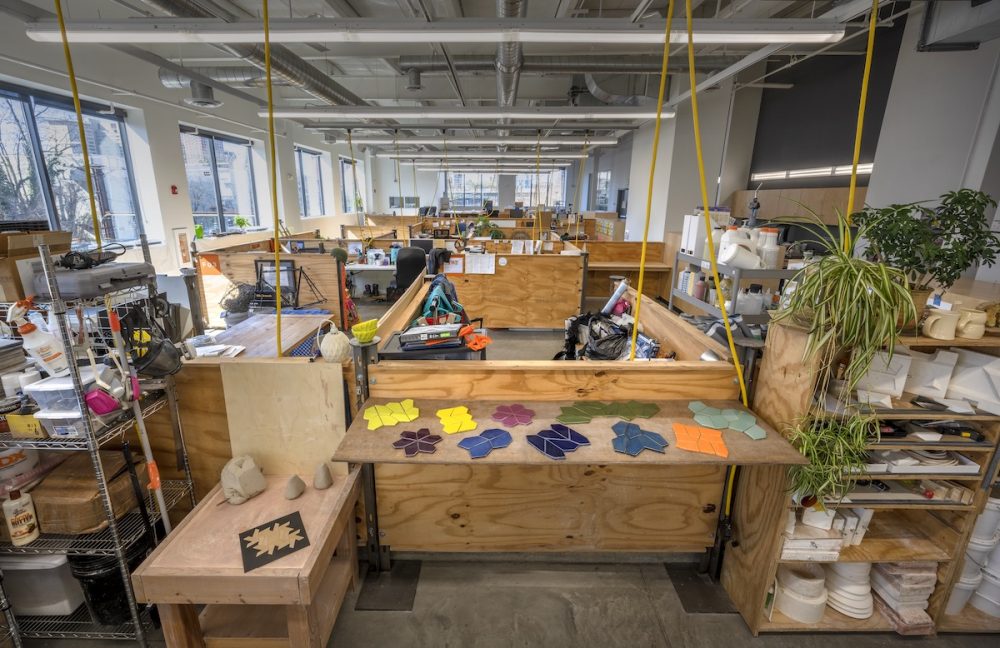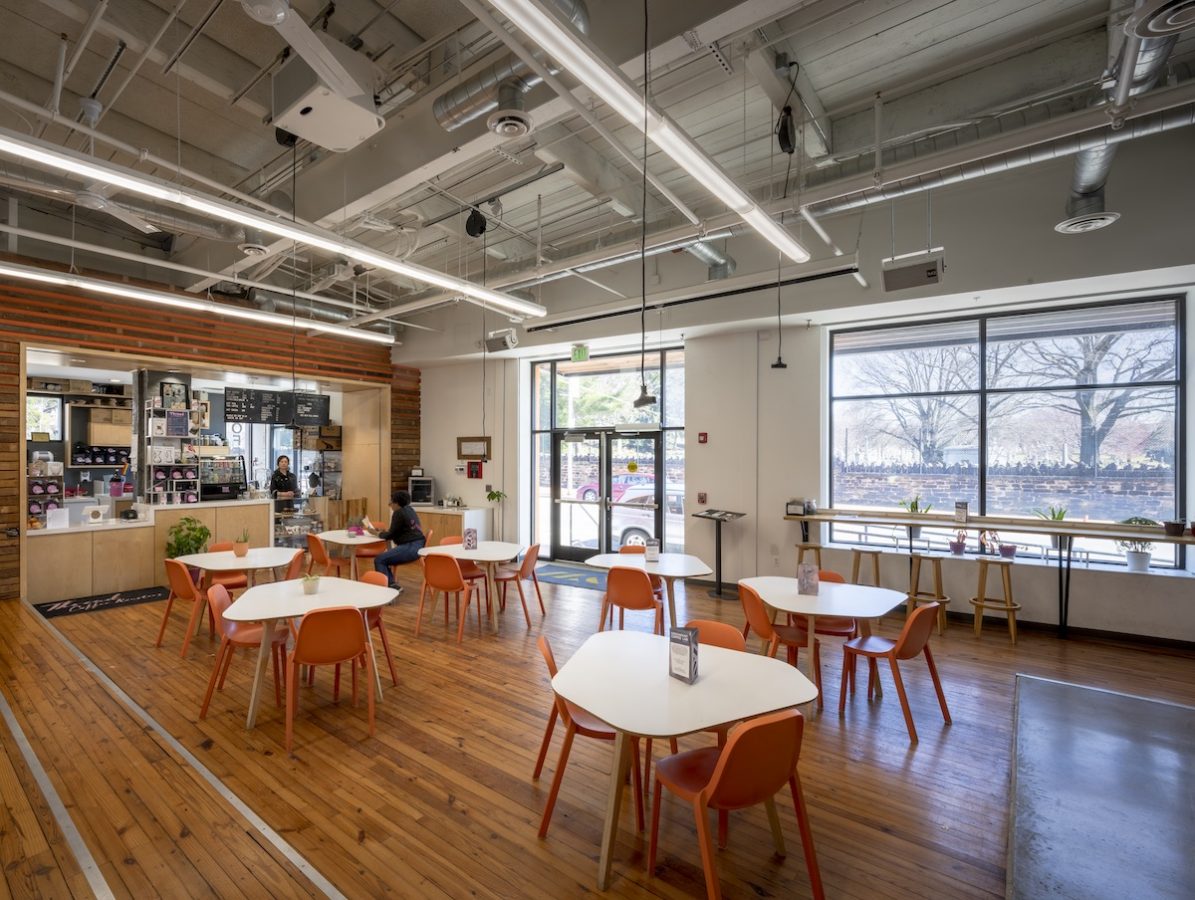‘Historic accomplishment’
Will Holman, executive director of the Open Works makerspace at 1400 Greenmount Avenue in Baltimore, played a key role in advocating for the legislation, and the bill states that TEDCO may partner with Open Works “to provide technical assistance to non-profit entities seeking to establish makerspaces in the state.”
Holman said in an email that the bill’s passage represents a “historic accomplishment for the maker movement” and puts Maryland in a leadership role.
“At least 7 other states have appropriated capital funds for a single makerspace facility somewhere – but no one has had the vision to build a network of truly public makerspaces,” Holman said in his message. “This is an innovation agenda for the 21st century, and Maryland is cutting the path!”
With the $5 million it provides, “this initiative puts Maryland in the position to shape the role that makerspaces play in state and local economies nationwide,” Holman said in a separate message following the vote. “We’re so excited that our lawmakers have seen the value in our State’s makers and entrepreneurs and have chosen, wisely, to invest in them.”
“This is the first state legislation within the U.S. that has invested in a public network of workshops for the people,” wrote Daniel Schneiderman, community manager of Make: Community, on makezine.com.
According to a General Assembly synopsis, the bill was drafted for the purpose of: “establishing the Maryland Makerspace Initiative Program… to encourage the establishment of makerspaces throughout the State; authorizing the Corporation to partner with a certain entity to provide technical assistance to certain nonprofit entities and to award certain financial assistance to local governments, certain designees of local government and certain nonprofit entities for the establishment of makerspaces in the State.”
In addition to the directors of Open Works, a 34,000-square-foot facility that opened in September 2016, others who supported the makerspace legislation included Nation of Makers, a trade organization based in Silver Spring; Stanley Black & Decker; the Maryland Chamber of Commerce; the Rural Maryland Council, and TEDCO. The bill goes into effect on October 1.
In a phone interview, Holman said he defines a makerspace as “a public-access workshop.” He said Maryland has several makerspaces besides Open Works, including ones in Salisbury, Greenbelt, Bethesda, and Annapolis, the “Fab Lab” at the Community College of Baltimore County in Catonsville, and space at the Chesapeake Arts Center in northern Anne Arundel County.
He also mentioned the former Foundry makerspace in the City Garage at Port Covington, which closed several years ago, and a makerspace in Western Maryland that was going to offer memberships for the public but evolved into a workforce development center during the pandemic and currently has no “public-facing” programs. Around the country, he said, there are approximately 2,000 makerspaces but only about 100 the size of Open Works, and only “a handful” that were capitalized, built from scratch, and professionally staffed the way Open Works is.
Holman said the makerspaces in Maryland all operate on different economic models and are tailored to their individual communities, generally charging membership fees for people who want to use their workshops and equipment and take classes. He said Open Works is a nonprofit operation that had total development costs of about $12 million, including $6.5 million for “hard construction costs,” and it currently has nearly two dozen employees and about 115 members, down from about 300 before the pandemic.
For $80 a month, a Pro Membership at Open Works provides access to the building and its equipment, including seven workshops and a computer lab. Open Works also offers day passes for $20 and a $175-per-month Resident Membership that includes a seven-foot by seven-foot micro-studio.
Holman said most makerspaces can’t operate on membership fees alone and the state initiative was necessary both to make existing makerspaces sustainable and create new ones where they’re needed.
At Open Works, he explained, membership fees cover only about half of the operating costs. He said having a state-sanctioned program for makerspaces, offering financial support from the government, means there will be an additional source of funds to assist existing makerspaces in getting new equipment or upgrades and also to help plan new makerspaces with seed money for architects, site surveys, and other pre-opening expenses. Having a network also means that members of a makerspace in one part of the state may have access to a makerspace elsewhere in the state, just like YMCA branches in different areas offer reciprocity to members, he said.
“There’s a diversity of business models, but nobody’s really solved the problem of how to make a sustainable makerspace because they’re expensive to operate, and in a city like Baltimore, you can’t really charge anywhere near what the resources actually cost in order to support the operating costs solely off of user fees.”
Open Works’ business model “is a lot like the YMCA,” he continued. “It’s about 50 percent user fees and about 50 percent grant funding, pre-COVID anyway. To expand access, to build a technically literate society, to make sure that any citizen who wants [it] has access to industrial tools and can learn how to safely use them, some form of subsidy is required… It’s time for the state to make a meaningful investment in expanding this infrastructure in other communities that can benefit from it.”
Although Bill 453 doesn’t specifically address the formation of a network of makerspaces, that’s what it leads to, Holman said. “That’s the next step of working it out,” he said. “The consortium language isn’t directly in the bill. But what this does is enable a consortium to occur… We’ve got to build a couple more makerspaces before we really have a network.”
Over the next year or so, Holman said, TEDCO will develop a process by which interested parties can apply for funds and criteria to determine who is eligible to receive funds, with the first grants coming after July 1, 2023. In general, he said, nonprofits, municipalities, and county governments will be able to apply for funds. “The language in the bill is fairly broad,” he said. “It’s up to TEDCO to establish the specific criteria.”
Holman said representatives of Howard, Montgomery, Carroll, and Baltimore counties, among others, already have expressed interest, and Open Works has been working with Coppin State University on plans to open a pilot makerspace on its campus in West Baltimore.
Asked how many makerspaces he’d like to see in Maryland, Holman said: “A great starting point would be one in every county… Having the government actually come in and take a stake in this idea, especially for capital costs, which is the hardest part of developing a facility like this, I think really is the path forward to building a sustainable network.”
Holman said he believes the state’s investment will be money well spent, based on a recent study of Open Works’ first three full years of operation.
“Every politician likes jobs,” he said. “Coppin State did a really great economic development study of us in 2019 that quantified the output of our member businesses and found that we put $5.5 million in the Baltimore economy every year and a shade under $10 million into the state economy every year.”
In addition, “we were generating 400-some thousand [dollars] in state and local taxes every year” before the pandemic, he said. “So we were able to really make an argument that [investing $5 million over five years] is a very inexpensive economic development play from the state’s perspective, but also that it kind of pays for itself over time… When you put it against what the state spends on any other kind of infrastructure or, say, the University of Maryland system, it’s a very cheap experiment for the state with a potentially extraordinary return on investment.”









